Abstract
Dracontiasis is one of the most easily preventable of the tropical parasitic diseases, yet in India the infection is still present in large numbers of people and causes extreme degrees of morbidity and incapacitation.
The 10 000 inhabitants of 4 villages in South India were interviewed and the prevalence of guinea-worm infection was found to vary from 11% to 54%; the prevalence increased with the proportion of the population using step-wells. Questioning revealed that infections with more than one worm at a time had occurred in 707 out of 1759 infected persons, that reinfections were common and that many people had suffered for long periods.
A survey of the water supplies in a district of South India with a population of about 1.87 million showed that more than 0.5 million people were at risk of contracting the disease. The necessity for protected water supplies and for the conversion of step-wells into draw-wells is urgent.
Full text
PDF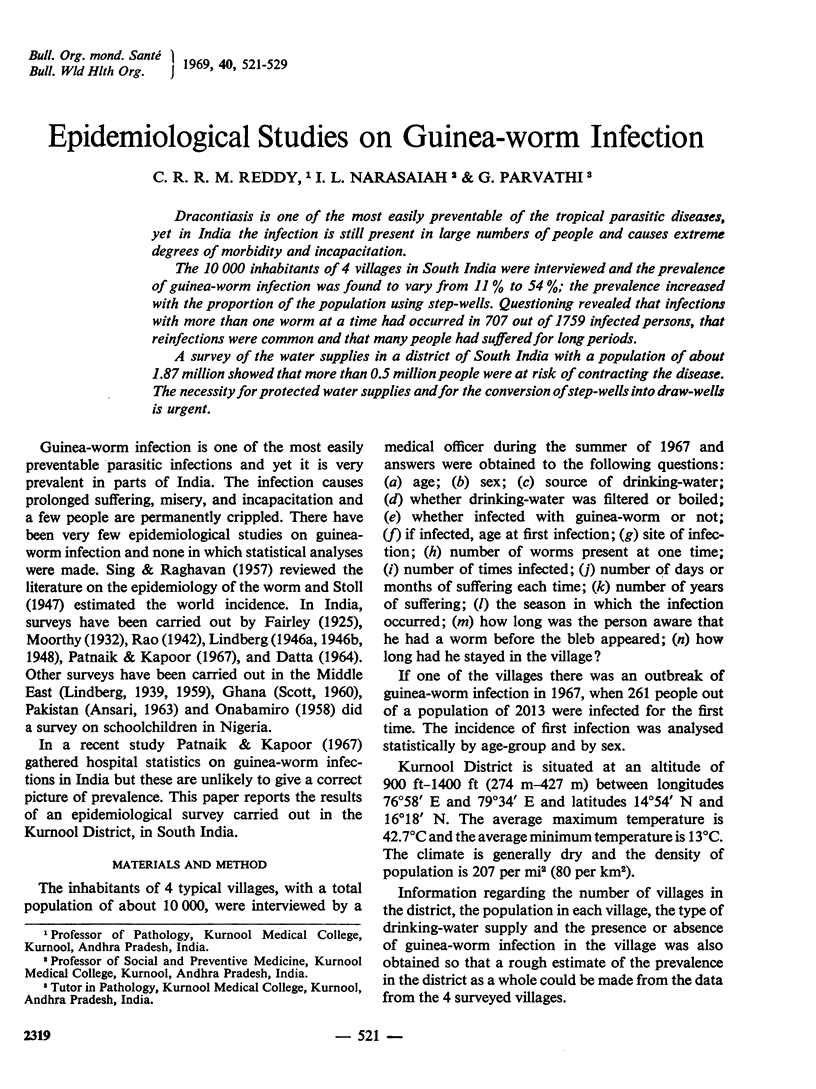
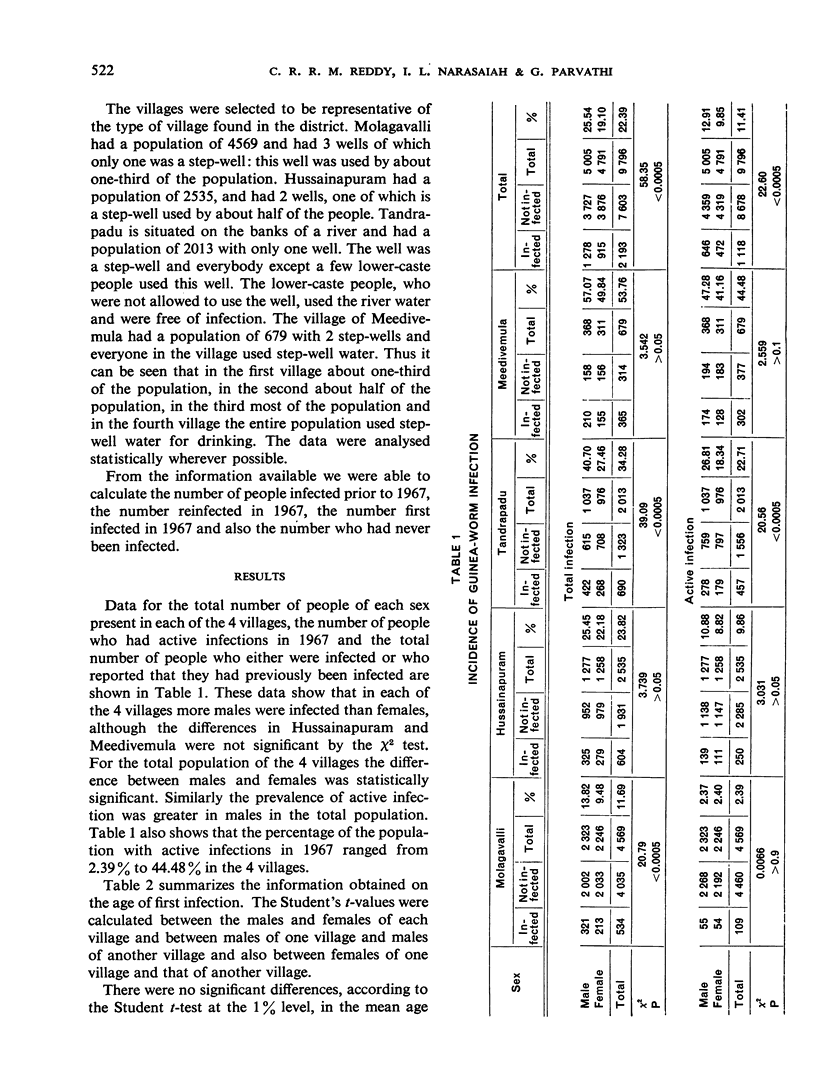

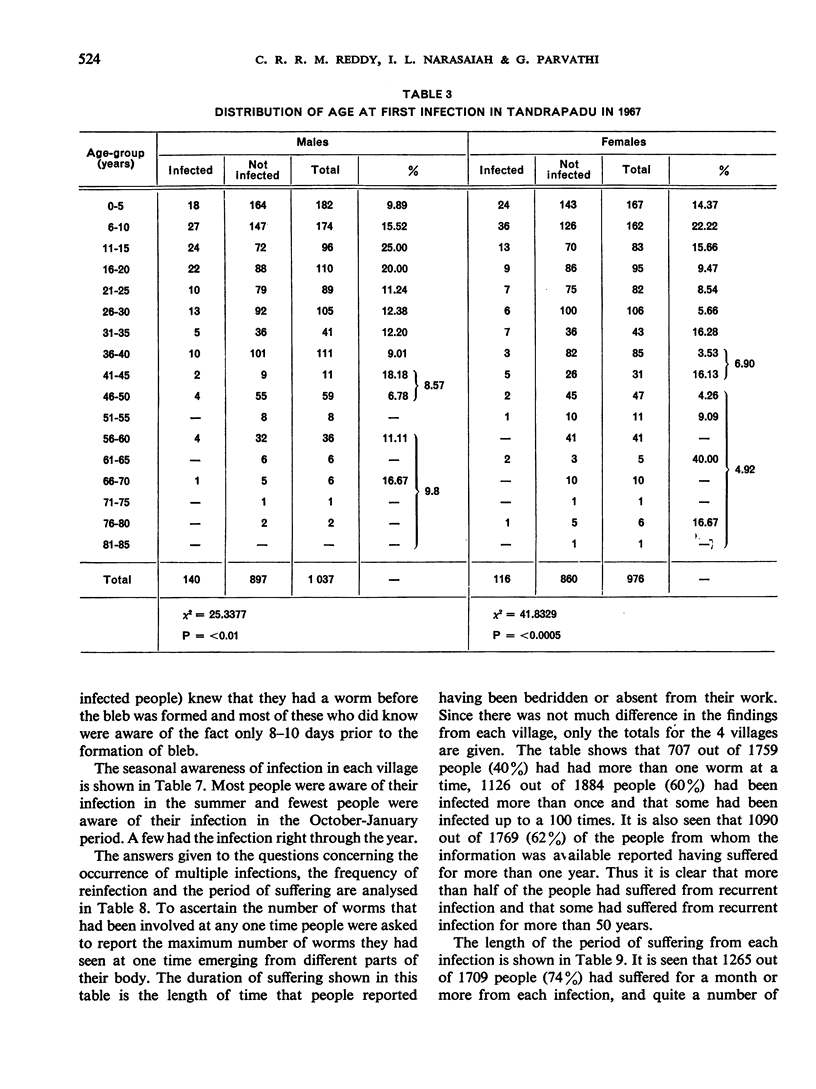
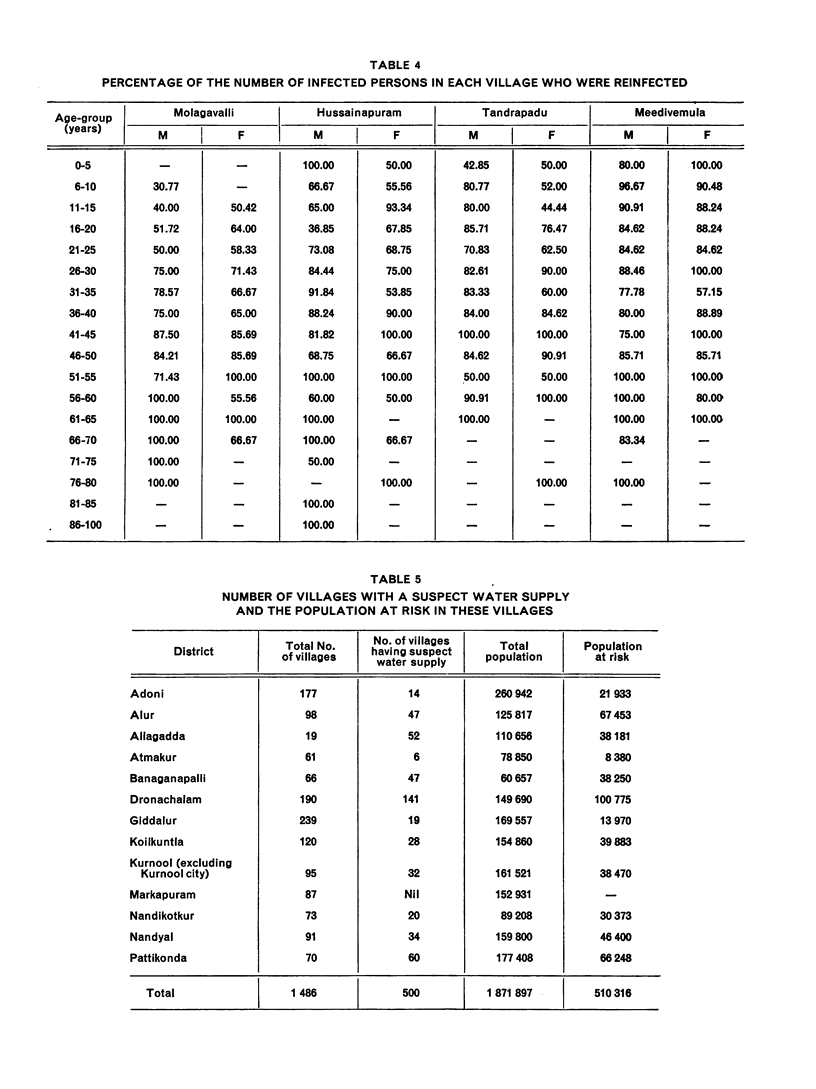
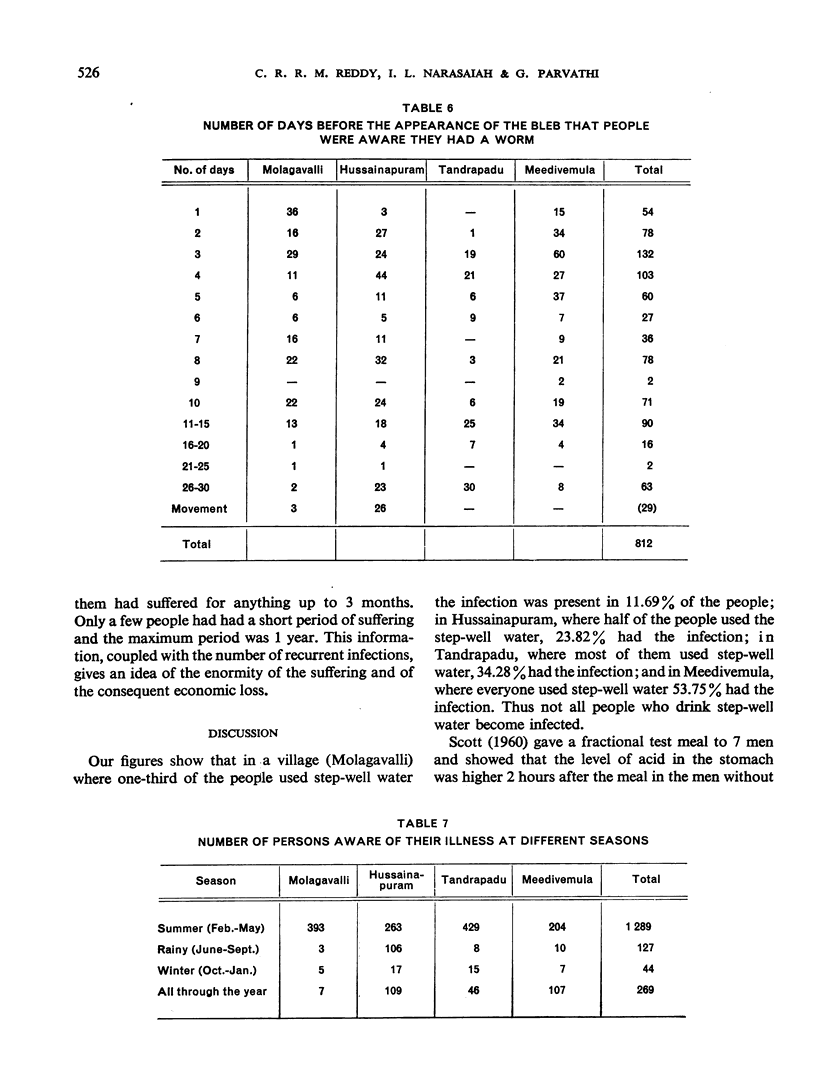
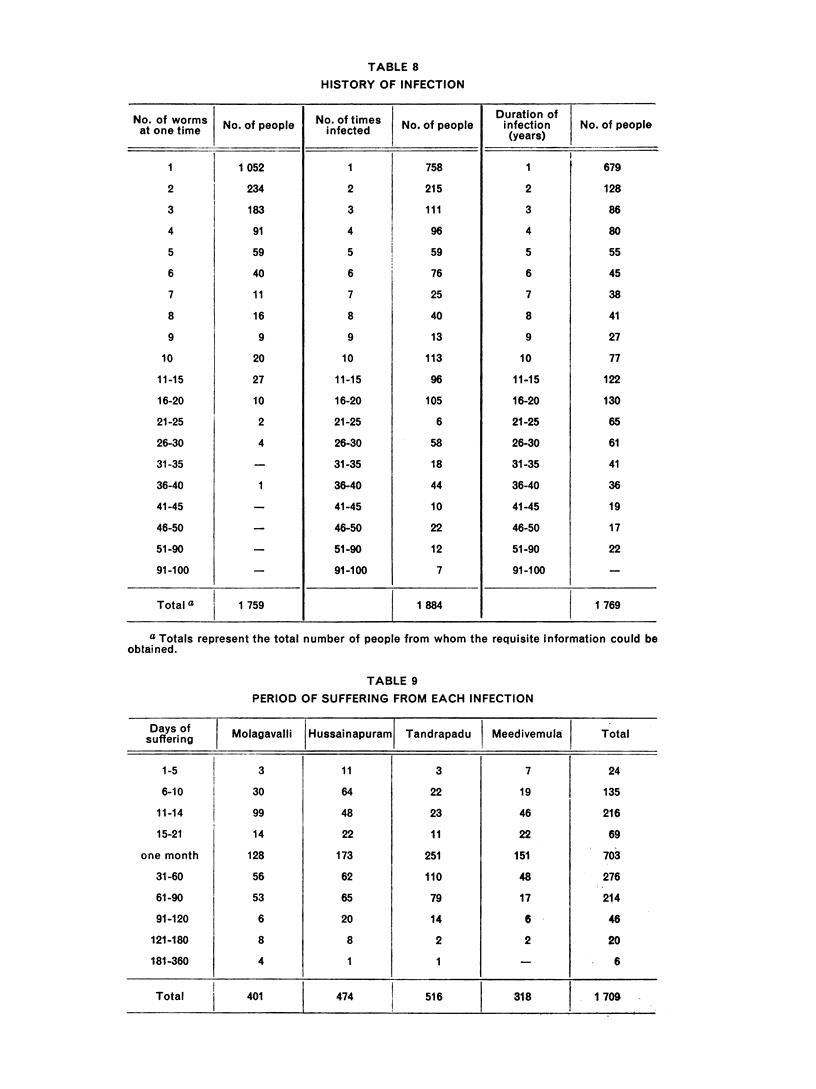
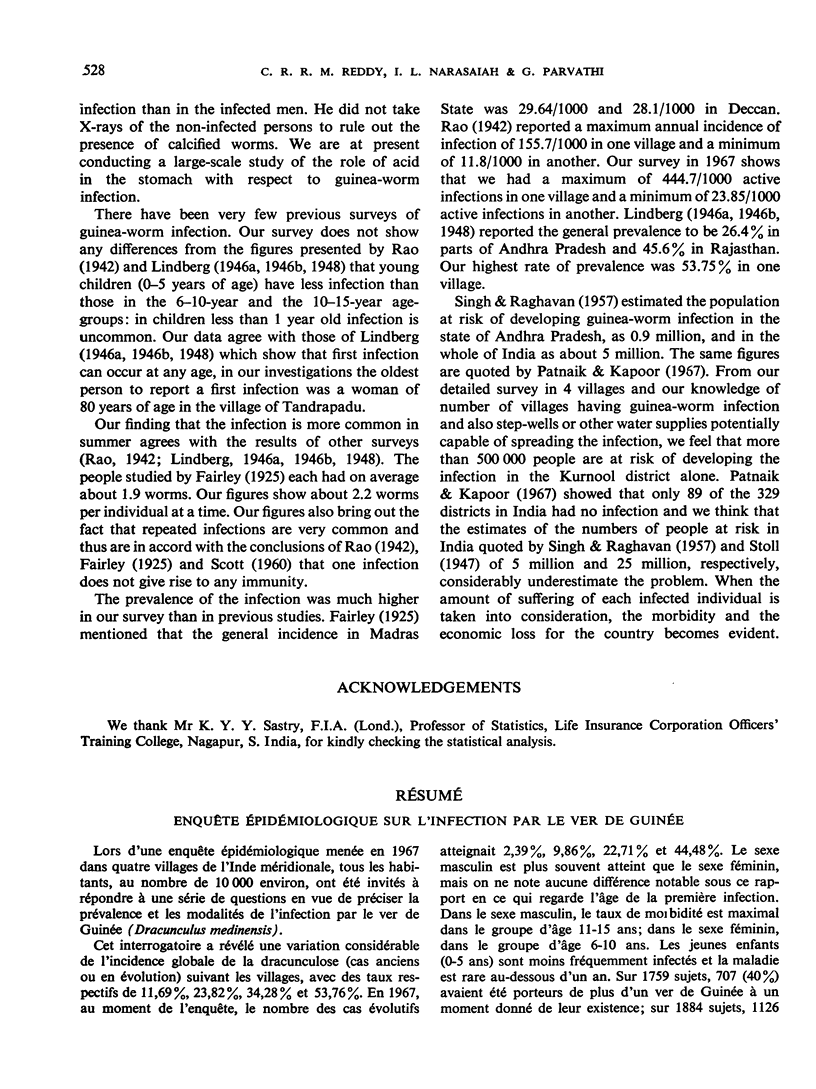
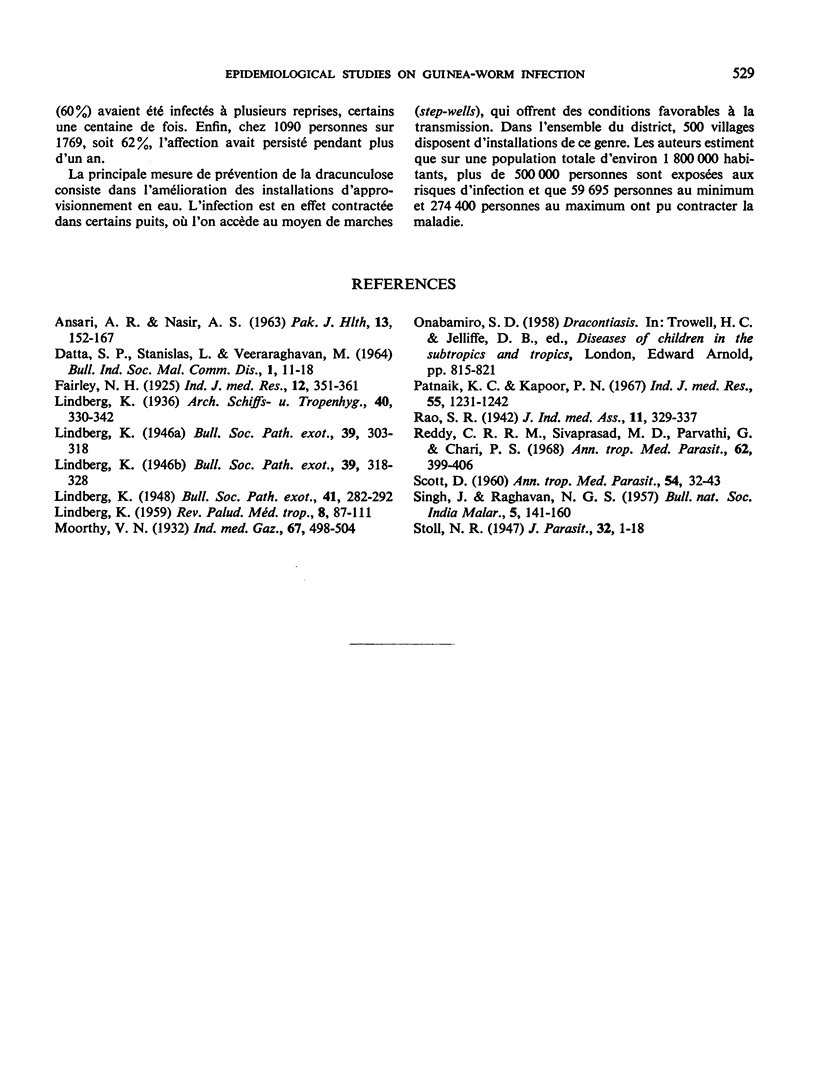
Selected References
These references are in PubMed. This may not be the complete list of references from this article.
- Patnaik K. C., Kapoor P. N. Incidence and endemicity of Guinea-worm in India. Indian J Med Res. 1967 Nov;55(11):1231–1242. [PubMed] [Google Scholar]
- Reddy C. R., Sivaprasad M. D., Parvathi G., Chari P. S. Calcified guinea worm: clinical, radiological and pathological study. Ann Trop Med Parasitol. 1968 Dec;62(4):399–406. doi: 10.1080/00034983.1968.11686576. [DOI] [PubMed] [Google Scholar]
- SCOTT D. An epidemiological note on guinea-worm infection in north-west Ashanti, Ghana. Ann Trop Med Parasitol. 1960 Apr;54:32–43. doi: 10.1080/00034983.1960.11685954. [DOI] [PubMed] [Google Scholar]


